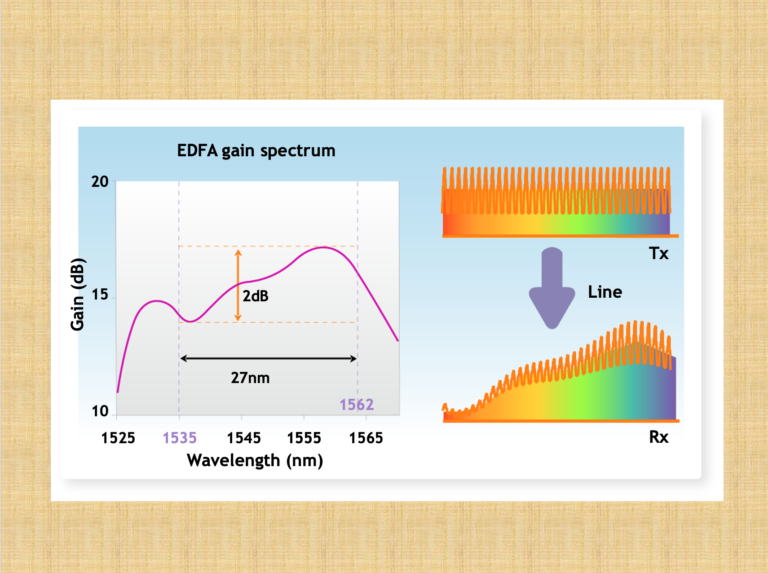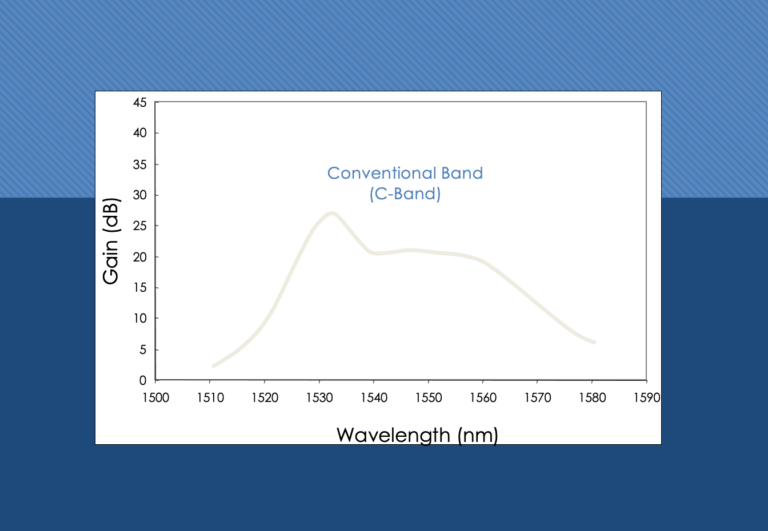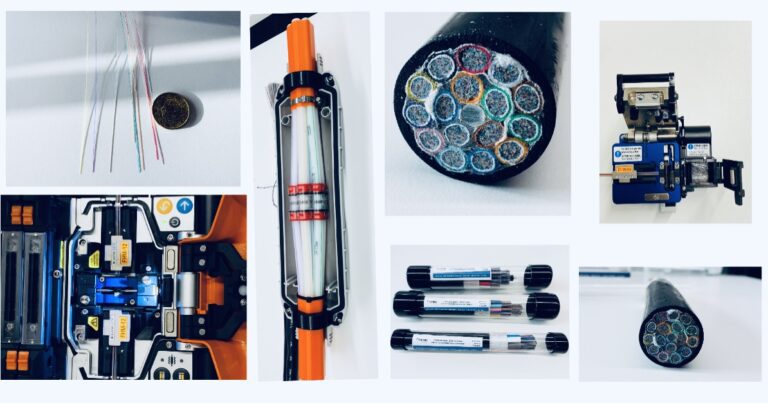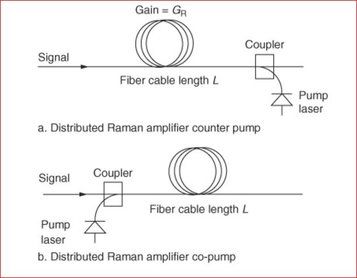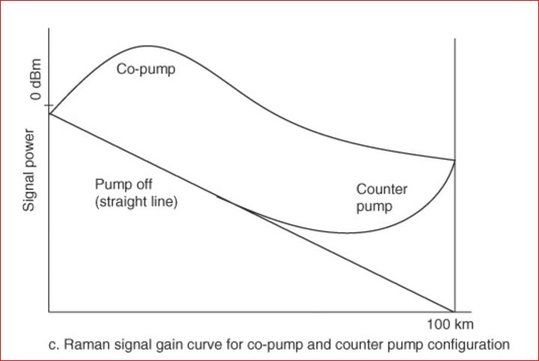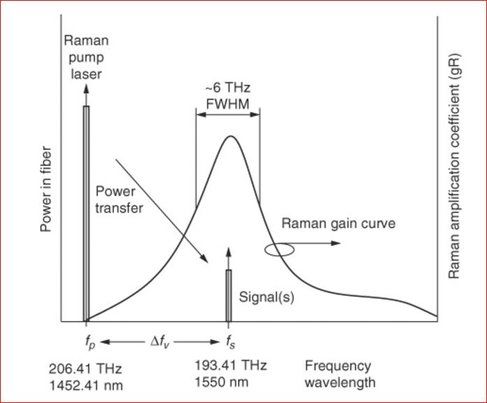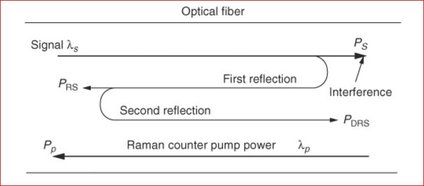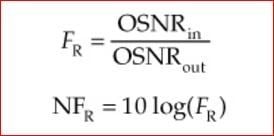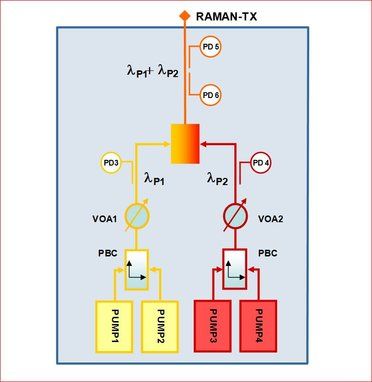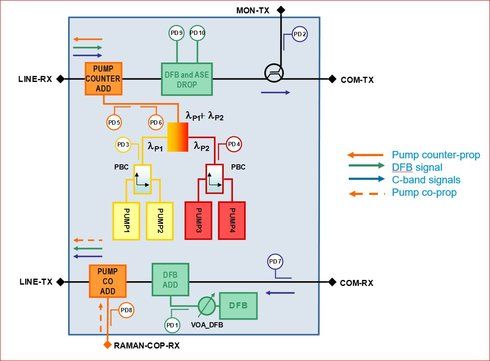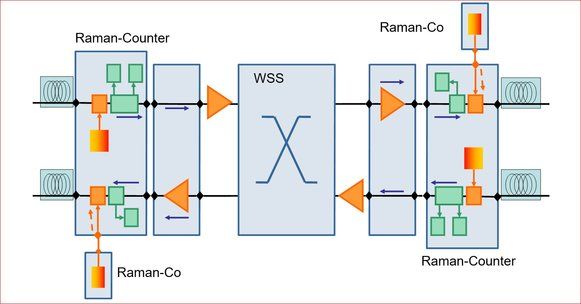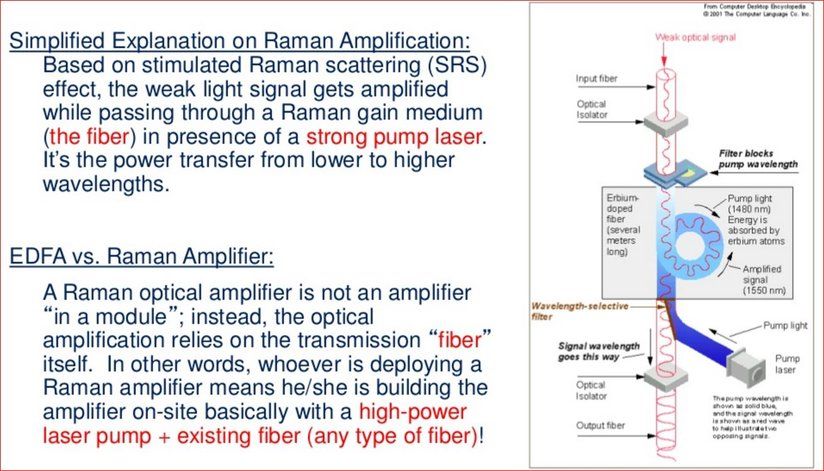EDFA stands for Erbium-doped fiber amplifier, and it is a type of optical amplifier used in optical communication systems
- What is an EDFA amplifier?
- How does an EDFA amplifier work?
- What is the gain of an EDFA amplifier?
- What is the noise figure of an EDFA amplifier?
- What is the saturation power of an EDFA amplifier?
- What is the output power of an EDFA amplifier?
- What is the input power range of an EDFA amplifier?
- What is the bandwidth of an EDFA amplifier?
- What is the polarization-dependent gain of an EDFA amplifier?
- What is the polarization mode dispersion of an EDFA amplifier?
- What is the chromatic dispersion of an EDFA amplifier?
- What is the pump power of an EDFA amplifier?
- What are the types of pump sources used in EDFA amplifiers?
- What is the lifetime of an EDFA amplifier?
- What is the reliability of an EDFA amplifier?
- What is the temperature range of an EDFA amplifier?
- What are the applications of EDFA amplifiers?
- How can EDFA amplifiers be used in long-haul optical networks?
- How can EDFA amplifiers be used in metropolitan optical networks?
- How can EDFA amplifiers be used in access optical networks?
- What are the advantages of EDFA amplifiers over other types of optical amplifiers?
- What are the disadvantages of EDFA amplifiers?
- What are the challenges in designing EDFA amplifiers?
- How can the performance of EDFA amplifiers be improved?
- What is the future of EDFA amplifiers in optical networks?
What is an EDFA Amplifier?
An EDFA amplifier is a type of optical amplifier that uses a doped optical fiber to amplify optical signals. The doping material used in the fiber is erbium, which is added to the fiber core during the manufacturing process. The erbium ions in the fiber core absorb optical signals at a specific wavelength and emit them at a higher energy level, which results in amplification of the optical signal.
How Does an EDFA Amplifier Work?
An EDFA amplifier works on the principle of stimulated emission. When an optical signal enters the doped fiber core, the erbium ions in the fiber absorb the energy from the optical signal and get excited to a higher energy level. The excited erbium ions then emit photons at the same wavelength and in phase with the incoming photons, which results in amplification of the optical signal.
What is the Gain of an EDFA Amplifier?
The gain of an EDFA amplifier is the ratio of output power to input power, expressed in decibels (dB). The gain of an EDFA amplifier depends on the length of the doped fiber, the concentration of erbium ions in the fiber, and the pump power.
What is the Noise Figure of an EDFA Amplifier?
The noise figure of an EDFA amplifier is a measure of the additional noise introduced by the amplifier in the optical signal. It is expressed in decibels (dB) and is a function of the gain and the bandwidth of the amplifier.
What is the Saturation Power of an EDFA Amplifier?
The saturation power of an EDFA amplifier is the input power at which the gain of the amplifier saturates and does not increase further. It depends on the pump power and the length of the doped fiber.
What is the Output Power of an EDFA Amplifier?
The output power of an EDFA amplifier depends on the input power, the gain, and the saturation power of the amplifier. The output power can be increased by increasing the input power or by using multiple stages of amplification.
What is the Input Power Range of an EDFA Amplifier?
The input power range of an EDFA amplifier is the range of input powers that can be amplified without significant distortion or damage to the amplifier. The input power range depends on the saturation power and the noise figure of the amplifier.
What is the Bandwidth of an EDFA Amplifier?
The bandwidth of an EDFA amplifier is the range of wavelengths over which the amplifier can amplify the optical signal. The bandwidth depends on the spectral characteristics of the erbium ions in the fiber and the optical filters used in the amplifier.
What is the Polarization-Dependent Gain of an EDFA Amplifier?
The polarization-dependent gain of an EDFA amplifier is the difference in gain between two orthogonal polarizations of the input signal. It is caused by the birefringence of the doped fiber and can be minimized by using polarization-maintaining fibers and components.
What is the Polarization Mode Dispersion of an EDFA Amplifier?
The polarization mode dispersion of an EDFA amplifier is the differential delay between the two orthogonal polarizations of the input signal. It is caused by the birefringence of the doped fiber and can lead to distortion and signal degradation.
What is the Chromatic Dispersion of an EDFA Amplifier?
The chromatic dispersion of an EDFA amplifier is the differential delay between different wavelengths of the input signal. It is caused by the dispersion of the fiber and can lead to signal distortion and inter-symbol interference.
What is the Pump Power of an EDFA Amplifier?
The pump power of an EDFA amplifier is the power of the pump laser used to excite the erbium ions in the fiber. The pump power is typically in the range of a few hundred milliwatts to a few watts.
What are the Types of Pump Sources Used in EDFA Amplifiers?
The two types of pump sources used in EDFA amplifiers are laser diodes and fiber-coupled laser diodes. Laser diodes are more compact and efficient but require precise temperature control, while fiber-coupled laser diodes are more robust but less efficient.
What is the Lifetime of an EDFA Amplifier?
The lifetime of an EDFA amplifier depends on the quality of the components used and the operating conditions. A well-designed and maintained EDFA amplifier can have a lifetime of several years.
What is the Reliability of an EDFA Amplifier?
The reliability of an EDFA amplifier depends on the quality of the components used and the operating conditions. A well-designed and maintained EDFA amplifier can have a high level of reliability.
What is the Temperature Range of an EDFA Amplifier?
The temperature range of an EDFA amplifier depends on the thermal properties of the components used and the design of the amplifier. Most EDFA amplifiers can operate over a temperature range of -5°C to 70°C.
What are the Applications of EDFA Amplifiers?
EDFA amplifiers are used in a wide range of applications, including long-haul optical networks, metropolitan optical networks, and access optical networks. They are also used in fiber-optic sensors, fiber lasers, and other applications that require optical amplification.
How can EDFA Amplifiers be Used in Long-Haul Optical Networks?
EDFA amplifiers can be used in long-haul optical networks to overcome the signal attenuation caused by the fiber loss. By amplifying the optical signal periodically along the fiber link, the signal can be transmitted over longer distances without the need for regeneration. EDFA amplifiers can also be used in conjunction with other types of optical amplifiers, such as Raman amplifiers, to improve the performance of the optical network.
How can EDFA Amplifiers be Used in Metropolitan Optical Networks?
EDFA amplifiers can be used in metropolitan optical networks to increase the reach and capacity of the network. They can be used to amplify the optical signal in the fiber links between the central office and the remote terminals, as well as in the access network. EDFA amplifiers can also be used to compensate for the loss in passive optical components, such as splitters and couplers.
How can EDFA Amplifiers be Used in Access Optical Networks?
EDFA amplifiers can be used in access optical networks to increase the reach and capacity of the network. They can be used to amplify the optical signal in the fiber links between the central office and the optical network terminals (ONTs), as well as in the distribution network. EDFA amplifiers can also be used to compensate for the loss in passive optical components, such as splitters and couplers.
What are the Advantages of EDFA Amplifiers over Other Types of Optical Amplifiers?
The advantages of EDFA amplifiers over other types of optical amplifiers include high gain, low noise figure, wide bandwidth, and compatibility with other optical components. EDFA amplifiers also have a simple and robust design and are relatively easy to manufacture.
What are the Disadvantages of EDFA Amplifiers?
The disadvantages of EDFA amplifiers include polarization-dependent gain, polarization mode dispersion, and chromatic dispersion. EDFA amplifiers also require high pump powers and precise temperature control, which can increase the cost and complexity of the system.
What are the Challenges in Designing EDFA Amplifiers?
The challenges in designing EDFA amplifiers include minimizing the polarization-dependent gain and polarization mode dispersion, optimizing the pump power and wavelength, and reducing the noise figure and distortion. The design also needs to be robust and reliable, and compatible with other optical components.
How can the Performance of EDFA Amplifiers be Improved?
The performance of EDFA amplifiers can be improved by using polarization-maintaining fibers and components, optimizing the pump power and wavelength, using optical filters to reduce noise and distortion, and using multiple stages of amplification. The use of advanced materials, such as thulium-doped fibers, can also improve the performance of EDFA amplifiers.
What is the Future of EDFA Amplifiers in Optical Networks?
EDFA amplifiers will continue to play an important role in optical networks, especially in long-haul and high-capacity applications. However, new technologies, such as semiconductor optical amplifiers and hybrid amplifiers, are emerging that offer higher performance and lower cost. The future of EDFA amplifiers will depend on their ability to adapt to these new technologies and continue to provide value to the optical networking industry.
Conclusion
EDFA amplifiers are a key component of optical communication systems, providing high gain and low noise amplification of optical signals. Understanding the basics of EDFA amplifiers, including their gain, noise figure, bandwidth, and other characteristics, is essential for anyone interested in optical networking. By answering these 25 questions, we hope to have provided a comprehensive overview of EDFA amplifiers and their applications in optical networks.
FAQs
- What is the difference between EDFA and SOA amplifiers?
- How can I calculate the gain of an EDFA amplifier?
- What is the effect of pump
- power on the performance of an EDFA amplifier? 4. Can EDFA amplifiers be used in WDM systems?
- How can I minimize the polarization mode dispersion of an EDFA amplifier?
- FAQs Answers
- The main difference between EDFA and SOA amplifiers is that EDFA amplifiers use a doped fiber to amplify the optical signal, while SOA amplifiers use a semiconductor material.
- The gain of an EDFA amplifier can be calculated using the formula: G = 10*log10(Pout/Pin), where G is the gain in decibels, Pout is the output power, and Pin is the input power.
- The pump power has a significant impact on the gain and noise figure of an EDFA amplifier. Increasing the pump power can increase the gain and reduce the noise figure, but also increases the risk of nonlinear effects and thermal damage.
- Yes, EDFA amplifiers are commonly used in WDM systems to amplify the optical signals at multiple wavelengths simultaneously.
- The polarization mode dispersion of an EDFA amplifier can be minimized by using polarization-maintaining fibers and components, and by optimizing the design of the amplifier to reduce birefringence effects.

